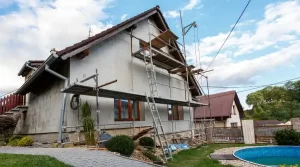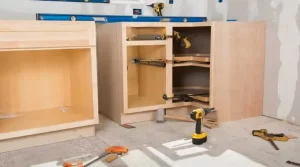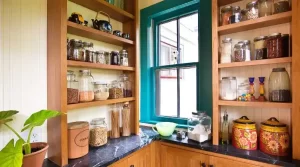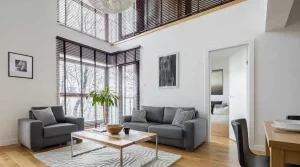Your custom home’s roof has a big influence on its appearance, security, and durability, not to mention your money. The sort of materials you can use, as well as the color, style, and pitch of your roof, may be governed by your homeowner’s association. If not, you can educate yourself about the many materials available and choose the best roofing material for your home after doing your research.
Over the years, roofing materials have advanced, giving you more options than ever.
Selection Criteria for Roof Design and Materials
Whatever type of roofing material you should select for your home may depend on a variety of things.
- Your home’s architectural design will influence how your roof is designed. As part of their overall appeal, most types typically have distinctive roof lines and materials.
- Frequently, permissible roof colors and materials are prescribed by homeowners groups. You can be required to use a particular kind of roofing material or be limited in the color by community covenants and regulations. In addition to criteria for energy efficiency and sustainable materials, local construction regulations sometimes include requirements for fire safety and weather resistance.
- Your roof’s color should blend in with the exterior of your house and the neighborhood. Also, some hues are thought to be more energy-efficient.
- The roof rating takes into account the anticipated lifespan of the roof under typical wear and tear, as well as the energy efficiency of the roof in terms of color, reflectance, emittance, and material sustainability.
- The sort of roofing material you employ may depend on the local climate and environment, notably on the amount of precipitation and humidity.
- What kind of roof you place on your house may also depend on your particular budget. Consider your roof’s endurance and durability if you have a little more financial wiggle room because roof replacements are pricey endeavors that you may not want to undertake frequently.
Be sure the roofing material you choose for your house both complies with local building codes and complements the aesthetic and architectural design of your house.
Various Roofing Material Varieties
There are numerous alternatives for roofing materials. Below is a list of the most popular ones in decreasing order of cost.
Asphalt and Composite Asphalt Shingle
The most popular and affordable roofing material is asphalt and asphalt composite shingles. It is frequently constructed from a fiberglass basis covered in mineral granules and asphalt, or from recycled paper that has been saturated in asphalt and covered in granules. It comes in a range of hues and is commonly used. Asphalt roofs, which are regarded as being simple to install and maintain, can be strengthened with organic materials or fiberglass to boost their endurance.
Pros:
- They are readily available, inexpensive, come in a variety of colors, and are simple to swap out.
- Asphalt shingles with lighter hues can reflect light to increase a home’s energy efficiency. Certain shingles may also efficiently emit light, lowering energy requirements even more.
- Fiberglass shingles are thought to offer good fire protection and could lower the cost of your home’s insurance.
Cons:
- As far as roofing materials go, asphalt shingles have a short lifespan, usually 20 to 25 years, but this can be as low as 10 if they are constructed cheaply.
- They have minimal to no inherent insulating characteristics, and the quality varies greatly.
- Despite the fact that they can be recycled, they are not seen to be sustainable. Much of this waste is disposed of in landfills.
Wooden Shakes and Shingles
Wood shakes and shingles give your roof a natural appearance. Shakes are hand-cut from wood blocks and have a more rustic appearance than shingles, which are machine-cut and have flat surfaces and crisp edges.
Pros:
- Offered in a range of woods, including pressure-treated pine, cedar, cypress, and redwood.
- Wood shakes and shingles can endure 5 to 10 years longer than asphalt shingles.
- Treated wood shingles are Class A fire rated, which may qualify you for insurance discounts.
- In addition to being recyclable, many wood shingles and shakes are created from salvaged trees that fall during storms.
Cons:
- Non-treated wood shingles only have a Class C fire rating, therefore if left untreated, the cost of your homeowner’s insurance may increase.
- Shakes and shingles made of wood may not be allowed in areas prone to flames.
- This type of roofing material requires frequent cleaning to avoid the formation of moss or algae and is high maintenance if left untreated. Furthermore, staining frequently occurs as a result of wood oils reacting with the environment.
Concrete Roof Tiles
Concrete roof tiles are made of a lightweight concrete mixture that gives them a rough appearance but makes them simple to install. Some concrete mixes include clay or wood fibers to provide strength without increasing weight.
Pros:
- Without repair, concrete tiles can last for more than 50 years.
- They are bug and fire-resistant.
- Concrete tiles come in a variety of designs, textures, and hues and are recyclable.
- Tile that is light in color reflects sunlight, improving your home’s energy efficiency.
Cons:
- Although the tiles are lighter than the majority of concrete, they are still heavier than the majority of roofing materials, necessitating additional structure to hold them.
- Your roof’s tiles could break if someone walks on it, making roof repair challenging.
Metal and Metal with Stone Coating
Contrary to what you might recall from old photos, corrugated tin is no longer the standard for metal roofing. Modern metal roofs are in demand due to their endurance and are comprised of zinc, steel, copper, and aluminum. Metal roofs can be completed in any color, style, or texture you can think of, and other styles besides corrugated are now available. They can also be stone-coated to resemble asphalt shingles, clay tiles, or wood shakes.
Pros:
- Continuity, continuity, continuity. Metal is regarded as a 50–100 year roofing material and is normally covered by a 30–50 year warranty.
- Many have Class A fire ratings, which will lower your homeowner’s insurance costs and prevent the spread of fire to your roof.
- The majority of metal roof components are created from recycled metals, and the roof is recyclable as well.
- Ice dams are avoided in the cold by metal roofs because they swiftly shed snow and water.
- Several residential metal roof materials adhere to the strictest building regulations.
Cons:
- Compared to asphalt and wood, metal roofing is more expensive, copper being particularly expensive. But, the longevity and durability more than makeup for the price.
- When hit by a heavy object, the material can dent, and repairs are more expensive than for many other types of roofing materials.
- Firefighters may find it challenging to penetrate a metal roof in order to apply water to a home fire.
Artificial Tile
You can make synthetic roofing out of plastic, clay, asphalt, or rubber. It is frequently made to resemble slate or wood roofs. For flat and low-sloped roofs, which your custom home might have in part, many synthetic materials were created.
Pros:
- Performance testing has given synthetics positive results.
- Many come with up to 50-year warranties.
- Thermoplastic single-ply, which is used on flat or low-pitched roofs, has at least one variety with the greatest energy star rating of any roofing material.
Cons:
- In order to assess durability and longevity, synthetics have not been utilized for long enough.
- You must conduct extensive research before choosing a synthetic because they are relatively new.
- The majority of synthetic materials are used for flat or low-pitched roofs, which your homeowners’ association may not permit.
- Your builder will need to educate themselves and their sub on how to assure correct installation because the majority of subcontractors are not knowledgeable about installing the synthetic roofing material.
Tile in slate
Your bespoke home will have a European feel thanks to the slate tiles. Slate tile roofing on European buildings can be hundreds of years old.
Pros:
- Your custom home will look opulent and European thanks to the slate.
- Slate is strong, long-lasting, recyclable, and requires very little upkeep.
Cons:
- Natural slate weighs a lot. Up to 1,500 pounds per 100 square feet are being discussed. To support it, you need an additional frame at an additional cost.
- Slate that has been put in correctly causes moisture issues quickly.
- As someone walks on the slate, it breaks, making roof repair more difficult.
Clay Tile Spanish
Mediterranean-style building frequently uses clay tile. For strength and durability, it has been enhanced and strengthened over time. The tiles are frequently coated or glazed with a waterproofing substance.
Pros:
- Clay lasts for at least fifty years.
- Clay tiles are resistant to fire and pests.
- Tiles can be recycled.
Cons:
- Similar to slate, clay is heavy and needs more support from the frame than lighter materials.
- Similar to the slate tile, it is frequently the most expensive roofing material available.
- Roof repairs can be challenging since tiles are brittle.
In conclusion, you have a variety of options for your custom home’s roofing material. While there are numerous variables that might influence your choice of roofing material, the two most important ones to think about are whether the material complements your home’s architectural style and whether your homeowners’ organization has any rules or guidelines for roofing. Make sure to rely on your dependable custom builder and architect to help you decide which roofing material is appropriate for your custom home.







